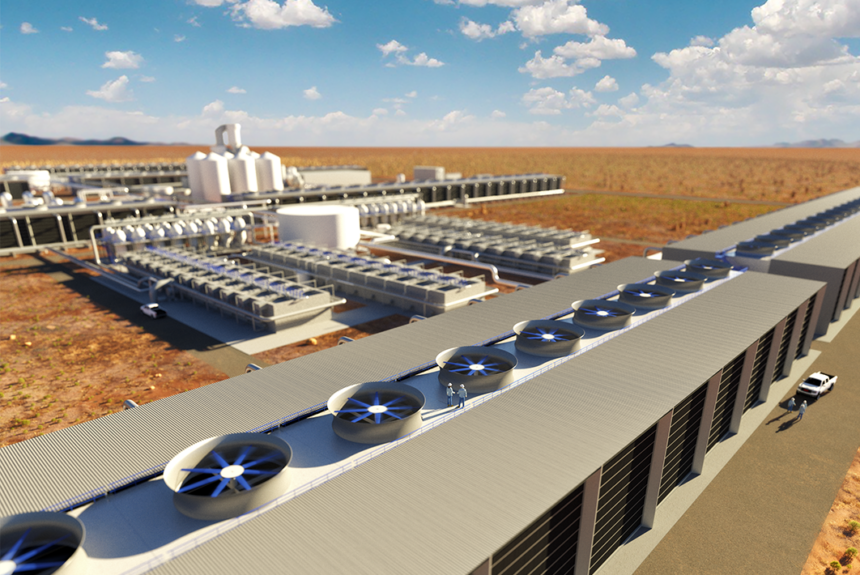As companies and governments have looked for ways to reduce emissions, one technology that has received increased interest in the United States this year has been carbon dioxide removal (CDR). CDR encompasses a variety of approaches including direct air capture (DAC) and storage, which pulls CO2 directly from the atmosphere using giant fans, biomass carbon removal, enhanced mineralization, and afforestation and reforestation. With a wide range of applications across various sectors of the economy, CDR will play an important role in reducing emissions around the globe.
>>>READ: Battelle, Climeworks, Heirloom Carbon Team Up to Advance Direct Air Capture
Both the private and public sectors have been actively involved in advancing CDR this year. In April, 1PointFive, a subsidiary of Occidental Petroleum, broke ground on the world’s largest Direct Air Capture facility in Texas. Once it is operational in 2025, this plant will be able to capture 500,000 tons of CO2 annually. Since then, Occidental doubled down on its DAC efforts with the $1.1 billion purchase of DAC technology firm Carbon Engineering.
Most recently, the Department of Energy (DOE) announced $1 billion in funding to Occidental and Battelle for two carbon removal projects along the Gulf Coast. Occidental’s 166-square-mile facility will be located near Corpus Christi, Texas, and is expected to be able to remove 1 million tons of CO2 annually while storing up to 30 million tons of carbon dioxide underground each year.
Battelle’s DAC plant, known as Project Cypress, will be located in southwestern Louisiana and will be operated in partnership with Heirloom Carbon and Climeworks.
The funding for these projects was appropriated in the Infrastructure Investment and Jobs Act which established funding for four Regional Direct Air Capture Hubs. Together these two hubs will be able to sequester two million tons of carbon dioxide annually. The Department of Energy plans to expand its carbon removal programming in the coming years and has recently published a Notice of Intent for CDR projects ranging from marine carbon dioxide removal to small mineralization pilots.
While many industry officials and policymakers are touting the benefits of CDR, some environmental groups are pushing back, stating that the technology allows the oil and gas sector to continue polluting and that the technology is years away from being deployed at a massive scale. It should be noted that American oil and gas has a comparative carbon advantage over energy produced overseas, and can meet future energy demand while emitting fewer greenhouse gas emissions. It should also be noted that climate change will require a suite of solutions and technologies; halting the development of an innovative solution today could hurt emissions reduction efforts in the future.
Others have fairly pointed out that direct air capture is an energy-intensive process that can effectively negate any emissions reductions from plant operations. Geothermal company Fervo is addressing this challenge. In February Fervo announced that it would begin designing a DAC facility that will be fully powered by reliable, renewable, carbon-free geothermal power which will ensure that the facility is a net-negative greenhouse gas emitter. Fervo has also made breakthroughs with enhanced extraction techniques, which will lead to greater availability of geothermal energy in regions that have been geographically constrained historically. This breakthrough coupled with Fervo’s work in the CDR space could lead to greater availability of carbon-negative DAC operations in the United States.
>>>READ: Fervo Energy Announces Combined Geothermal and Direct Air Capture Plant
Despite the increasing public and private interest in CDR, some policy barriers remain. One of the biggest challenges that developers face is the lack of availability of Class VI injection wells, which are regulated by the EPA for the long-term underground storage of carbon dioxide. To date, the EPA has only permitted two Class VI wells, a figure that is well short of the expected 650 that some energy experts think will be needed to reach carbon goals. Granting regulatory authority for Class VI wells to states, as has been done in North Dakota, Wyoming, and Louisiana would allow more wells to be permitted faster and under stricter environmental standards.
Policymakers should also continue to support research and development efforts at the Department of Energy. The Infrastructure Investment and Jobs Act allocated $12 billion for CDR R&D while the Inflation Reduction Act included lucrative tax incentives to accelerate market growth. Continued funding for CDR activities through annual appropriations cycles will lower the cost of entry for the private sector and ensure that the technology continues to develop. At the same time, lawmakers should provide strong oversight on this spending to ensure that tax dollars are being spent wisely and that government investment is not leading to overcrowding of private sector spending.
The robust private and public sector investment in carbon dioxide removal is a welcome step for climate-conscious citizens, the economy, and the planet. Reducing certain barriers and continuing smart federal investments in research and development will ensure that CDR will enjoy more widespread adoption in our energy future.
The views and opinions expressed are those of the author’s and do not necessarily reflect the official policy or position of C3.
